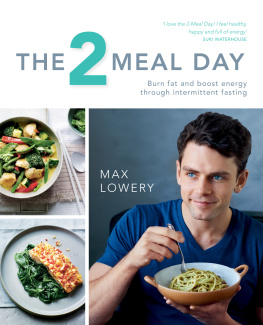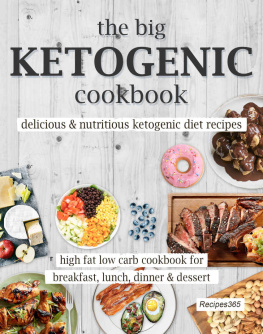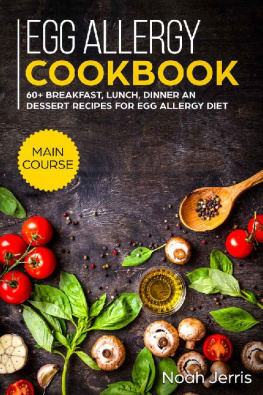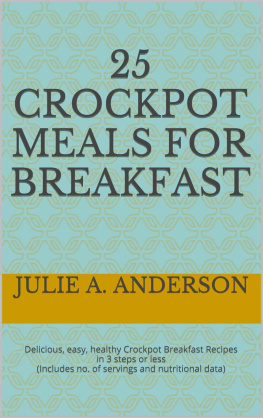The 31+ Egg Separator Recipes You Wish You Knew, for All Your Breakfast, Lunch, Dinner & Dessert Desires!
Copyright 2015 - By reading this document, you assume all risks associated with using the advice given below, with a full understanding that you, solely, are responsible for anything that may occur as a result of putting this information into action in any way, and regardless of your interpretation of the advice
Introduction
There is more to eggs than just a fast, easy, and nutritious protein-packed breakfast. Whole eggs are packed with nutrients, minerals, and vitamins that the body requires to maintain good health.
One egg contains 13 essential vitamins and minerals all for 70 calories. To mention a few, one hard-boiled egg contains vitamins A, B5, B12, B2, B6, D, E, K, Folate, phosphorus, selenium, calcium, and zinc.
The egg whites contain more than half of the protein content, riboflavin, and selenium. The yolk of an egg, on the other hand, has a vital role in various aspects of human health through life, from providing needed nutrient in fetal development during pregnancy (folate) to providing protection to the brain in older adults (choline).
Whole eggs are also excellent sources of choline, a vitamin B that the brain needs to build cell membranes and produce signaling molecules, which helps promote good brain health.
Zeaxanthin and Lutein are also present in eggs. These antioxidants help maintain and build up the retina of the eyes for good eyesight, especially when a person gets older and the eyesight tends to falter.
Dont all the health benefits you can get from an egg make you all excited and giddy to take out your egg separator and break an egg?
Chapter 1: Purchasing, Handling, and Storage of Eggs
Poor handling of eggs poses potential risks. The shell of the eggs may contain harmful bacteria, such as Salmonella, which can cause food poisoning.
When purchasing your eggs, inspect the shells carefully for dirt or cracks. They might not smell bad but dirt and cracks indicate that they are unsafe since they have higher chances of carrying bacteria. The cracks can allow the bacteria to enter and grow inside the egg. And a dirty egg is a perfect breeding environment of bacteria. The egg shells are porous materials and the bacteria in the dirt can move through the shell into the egg. Dirty eggs may also cross contaminate your food preparation area.
Handling Eggs
Wash your hands thoroughly with soap and warm water after handling eggs, and then dry with paper towel.
Before using any egg, always check if the egg is dirty or cracked. You might think of washing dirty eggs, but this is unsafe. It is always best to throw eggs away if they are dirty or cracked.
Additional Tips
When cooking, follow the guidelines below to keep the harmful bacteria from transferring into the preparation surface.
- Immediately throw the used eggshells into a bin
- Avoid the spillage of any egg material on preparation surfaces.
- After handling eggs, wash and sanitize the preparation surfaces, especially if there have been any spillage of egg and before cooking other food.
- Thoroughly wash, sanitize, and dry the equipment or utensils used with egg.
- Use a sanitized egg separator or wear gloves when separating eggs. Using bare hands or the shells may transfer the harmful bacteria from the eggshells to the egg material.
Storing Eggs Cooked and Raw Eggs
It is always important to check the best if eaten before date on the packaging or carton. Use the eggs according to the date indicated and store in 15C or less. Refrigerating the eggs is recommended to decrease the risk of harmful bacteria from growing. Be sure to place the eggs in the main body of the fridge and not the door to ensure consistent temperature. Keep them in their original package and away from any ready-to-eat or cooked foods.
Leftover Egg Whites and Yolks
Place them in airtight containers and immediately store in the fridge.
To prevent the yolks from drying, you can cover them with a little cold water. Just drain the water before you use them.
Hard-Cooked Eggs
You may notice that storing hard-cooked eggs produces a gassy odor. This is normal and harmless. The odor will dissipate after a few hours.

Freezing Eggs
These techniques are simple ways to store your eggs.



Cooking with Frozen Eggs
To use the frozen eggs for baking or cooking, remove them from the freezer and transfer to the body of the fridge; thaw overnight. You can also thaw them under cold running water.
*Note: use the thawed frozen eggs immediately and only in dishes that will cook them thoroughly.
Recommended Substitutions for Raw Eggs

IMPORTANT NOTE: Unless otherwise specified, most recipes are written based on the use of large eggs. One large egg = 1/4 cup or 4 tablespoons or 50 mL.
How to Tell If Eggs Are Fresh
The best before date in the package or the carton is the easiest way to tell if the eggs are fresh, which is why it is important to store them in their original container.
If youve discarded the containers, here are a few tips to determine the freshness of eggs:
- Fresh eggs will sink in water. As the egg ages, the size off the eggs air cells inside increases causing them to float.
- The yolk in a fresh egg will sit up high while the white is thick and will closely surround the yolk. When the egg is older, the yolk will appear flat and will break easily and will have a watery, thin white.
- To know if the eggs are raw or hard-cooked, just spin them. If it spins longer, it is hard-cooked. Raw eggs will spin shorter because the liquid raw prevents it from keeping momentum.
- A cloudy egg white is a sign that it is fresh and not age. This cloudiness is the result of high carbon dioxide content when it was laid.
Chapter 2 Yolky Breakfast
As with the rest of the recipes in this book, save the yolks and the whites that are not needed to make the dish; use them cook or bake according to the needed yolk or white in the other dishes here.
I have indicated the number of yolks or whites after each recipe name for easy browsing. Have fun!
Sweet Potato Pancakes (serves 4)
4 large eggs, separated
I used our leftover cooked orange-colored sweet potato when I cooked this recipe and it turned our moist and yummy.
Ingredients:
2 egg whites; beat lightly
Flour Mix
3 tbsp. yellow cornmeal
1/4 cup pecans; chopped
1/2 tsp. salt
1/2 tsp. cinnamon
1 1/4 cups flour
Milk Mix
3 tbsp. brown sugar
1 cup milk (or buttermilk
2 egg yolks
1/2 tsp. vanilla
1 tbsp. canola oil
1 cup sweet potato; cooked and mashed
Directions:
- In a large bowl, combine the flour mix ingredients by stirring using a whisk.

















